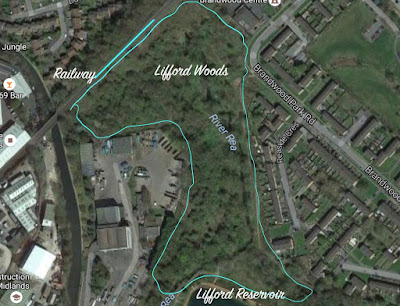Curse of the hedgerow (A perspective)
How we love to celebrate the British hedgerow, citing the great benefits to the natural world and the enhancement to the wider countryside, together with the annual 'National Hedgerow Week' and hedging competitions taking place around the country; mostly carried out by volunteers and amateurs it should be said, but also employing a few professionals in the process.
Alongside these annual events, there are written works aplenty and photographs combining to make a very interesting historical account, but with ramifications beyond the 'green and pleasant land' epithets.
'Enclosures' with its sinister and oppressive connotations is cited in virtually all works on the subject, and on occasions in social history accounts too.
Sylvia Federici makes many references in the Preface, Introduction to, and text in her book on capitalism, 'Caliban and the Witch', noting early on "...a new round of "enclosures" that have expropriated millions of agricultural producers from their land, and the mass pauperisation and criminalisation of workers, through a policy of mass incarceration ...."
'Enclosures' essentially refer to the appropriation and division of land by unscrupulous means and methods to dispossess the poorest land workers, actions, which reverberate to this day.
Once this monumental usurpation had taken place, the floodgates of capitalism were opened wide.
Richard and Nina Muir acknowledge the inequalities in their well-considered and balanced account 'The Great Enclosures', "..Enclosure was a boon to the rich and a curse on the poor..", a most familiar arising in any age no doubt.
'Enclosure' is the physical boundary, largely celebrated today, whilst 'Inclosure' is the legal term referring to "the conversion of common land into private land". But in some instances land was enclosed without legal support. Either way, it was a monumental shaping of the landscape affecting many people over a number of centuries, but particularly rife between the mid-18th and mid-19th centuries.Having realised the value of hedgerows as a youthful rookie birdwatcher, seeking any new record for my tick list, I also realised quite early on in this venture how sterile much of the bleak arable countryside was in this regard.
Whilst our impressions of the green and pleasant land are set in our minds, in reality, there's little to sing and shout about, apart from dog walkers and ramblers, much of Britain is devoid of people and wildlife.
 |
| The rolling landscape of Foxcote, Cradley My first birdwatching haunt (photo V Fowkes, FB October 2022) |
For me, with a cynical eye, whilst also accepting the political difficulties of countryside management, the message is largely 'Keep Out', 'Beware of the Bull', 'Beware of the dog' and 'Trespassers will be shot' or at least prosecuted. Whilst we may not see specific or actual signage of this nature these days, although I'm sure there are some scattered around, it's the message of the thorny hedgerow, the encouragement of spiky bramble and the barbed-wired gate top that is ingrained in our culture, providing a clear message - KEEP OUT.
The Ramblers say-
Open access land currently covers around 8% of land in England and Wales, and focuses mainly on upland land types, like mountains, moors, heaths and downs. There are opportunities to bring the joy and benefits of exploring off-path to more people and places.
The Ramblers would like to see:
- A more equal freedom to roam
Open access land is not evenly distributed. People living in lowland areas – like much of eastern England – have less opportunity to roam near to where they live. For example, only 0.6% of land in Kent is open access, compared to 72% of the Peak District.
Inclosure, thou'rt curse upon the land
And tasteless was the wretch who thy existence planned
John Clare (Poet) 1821
 |
| Moor Green Allotments |





Comments
Post a Comment